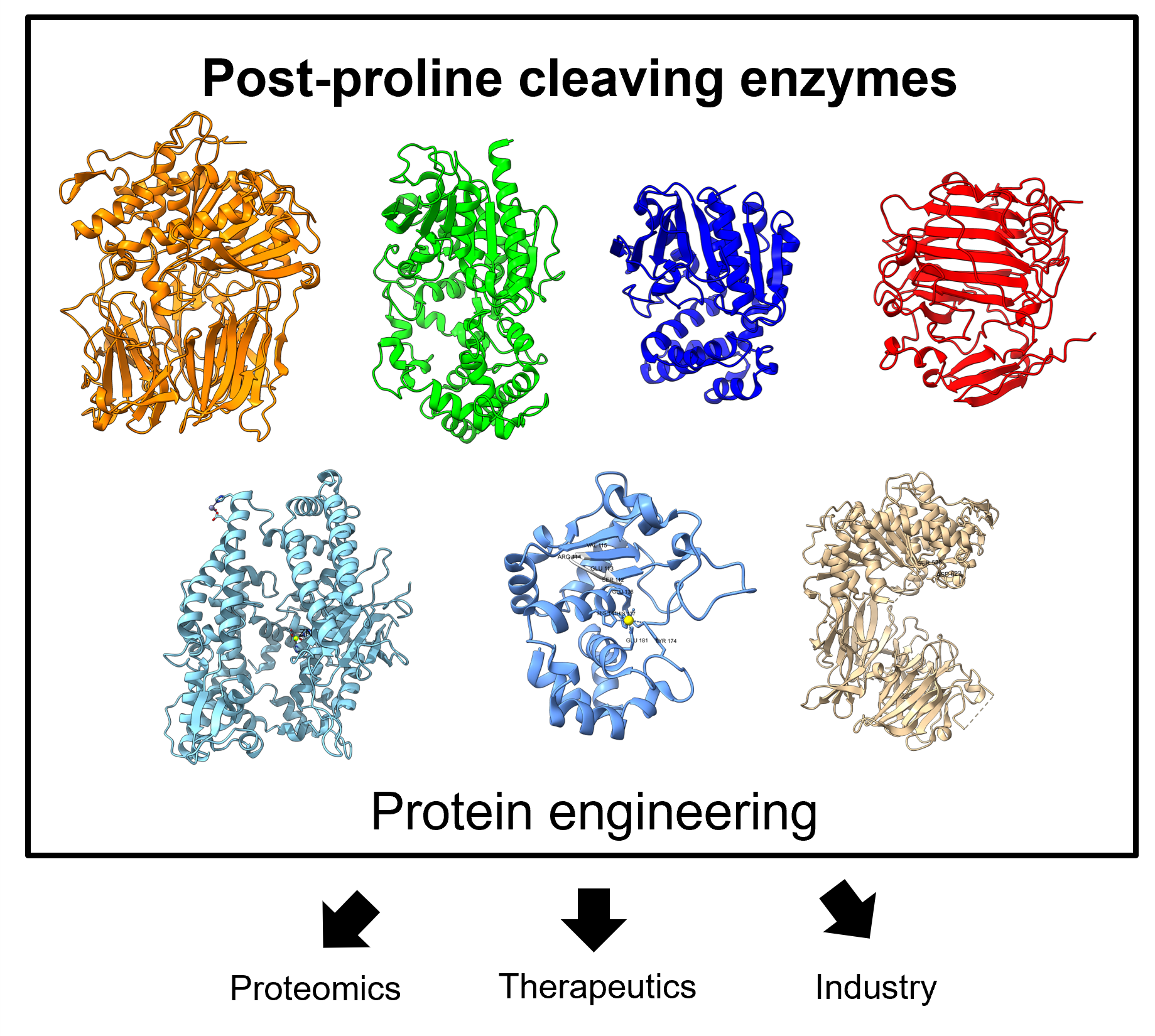Proteases or peptidases are hydrolases that catalyze the breakdown of polypeptide chains into smaller peptide subunits. Proteases exist in all life forms, including archaea, bacteria, protozoa, insects, animals, and plants, due to their vital functions in cellular processing and regulation. There are several classes of proteases in the MEROPS database based on their catalytic mecha-nisms. This review focuses on the post-proline cleaving enzymes (PPCEs), especially the prolyl endoprotease/oligopeptidase (PEP/POP). To date, most PPCEs studied are of microbial and ani-mal origins. Recently, there are reports of new plant PPCEs. The most common PEP/POP are members of the S9 family that comprise two conserved domains. The substrate-limiting β-propeller domain prevents unwanted digestion, while the α/β hydrolase catalyzes reaction at the carboxyl-terminal of proline residues. PPCEs have diverse applications, are widely used in the beer brewing industry, and have potential as therapeutic agents for Alzheimer’s disease and celiac disease by targeting proline-rich substrates. Protein engineering via mutagenesis has been performed to improve heat resistance, pepsin-resistant capability, specificity, and protein turno-ver of PPCEs for pharmacological applications. This is the first comprehensive review to cover the biotechnological applications of PPCEs and discuss the unique prolyl cleaving activity of dif-ferent enzymes based on the recent structure-function studies from diverse taxa.

